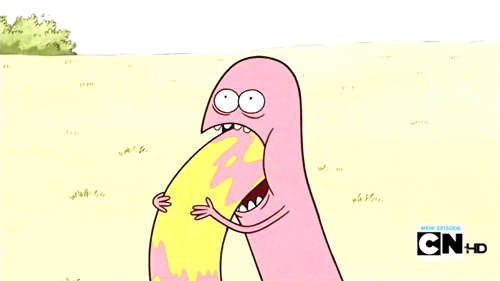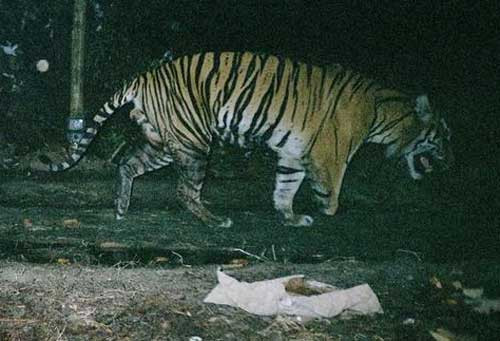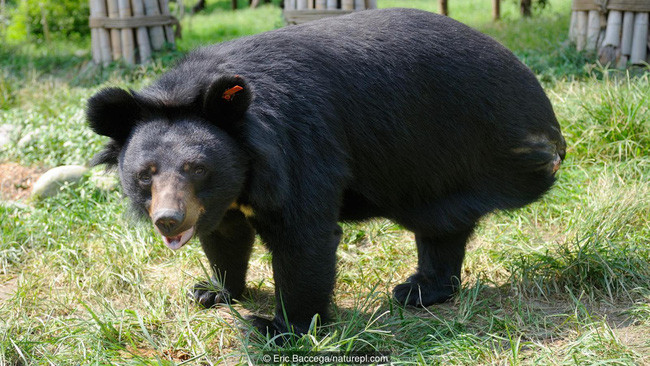Decoding horror phenomenon: Animals feed themselves
If we consider nail biting to be "too dirty" or "too bad" then there are animals that eat . their own tails or brains.
Nature is cruel! Animals always use their claws to feed, or simply rip off their prey to play. Some species also eat their own species to survive or express authority.
However, more frightening than cannibalism is self-feeding . yourself. Although it seems to go against the intention of creation, this phenomenon is quite common in many animals. So what is the reason for this bizarre action?

What is the reason for this bizarre action?
1. Eating your own body is a self-defense . method
In 2007, a tiger was caught missing its front legs in Tesso Nilo National Park in Sumatra (Indonesia). They guessed that it chewed its own foot to " free" the body from the trap.

"Three-legged" tiger in Sumatra island.
This turns out to be a common phenomenon in animals. Dogs, bears and monkeys also chew their skin, muscles, tendons and bones, to escape from trapped parts.
This behavior may sound "too bloody" but also very reasonable: it is better to lose a part than lose your life.

This is a common phenomenon in animals.
However, that is not the only reason animals eat themselves.
2. Self-feeding is a form of "brain" upgrade
Sea squirt is born larvae, shaped like tiny tadpoles. After clinging to a stone, the larvae . are entrenched there.

Larvae of pepper.
Like moths on land, they also gradually change their morphology. By the time of adulthood, the seaweed looks like small bags with many holes, surviving by absorbing food from the sea.
Larvae and mature pepper have different lifestyles, which means that their bodies are also different.

Seaweed is mature.
The marine larvae have a very simple structure, including only a bunch of nerves running along the spine, quite like the backbone of high-level animals. In front of this bundle is the ganglion (brain pocket) with light and gravity receptors.
When growing up, the pepper does not need these parts anymore . so eat them. The brain bag is "recycled" into the brain to support food digestion.
In other words, they . feed their brains.

When growing up, the pepper does not need these parts anymore . so eat them.
3. "Burst" yourself because you think you are . prey
Will the snake be so crazy that it will eat itself? The answer is yes.
Most snakes use their ability to sense body heat to hunt. However, there are species that wag their tails quickly to attract prey, so sometimes it mistakes their tails as bait and rushes to . impulse.

The swallowing of the bait, or here it is, swallowing the body of the snake is not intentional.
Also, if the scent of some prey remains on the snake's body, it will devour its tail because it is thought to be swallowing the bait.
In other words, swallowing the bait, or here, swallowing the snake's own body is not a deliberate act - when you see a "smell" of a snake flying again "cup" .
4. Eating the placenta after birth can be helpful
Many mammals often eat placenta and amniotic fluid during childbirth, such as cats.

A cat is eating the placenta after birth.
The explanation for this phenomenon, Professor Mark Kristal from Buffalo University in New York (USA), said that eating the placenta can be a method of postpartum pain relief , especially in rodents.

If they do not eat their own placenta, there will be other animals to eat.
A 2015 study conducted by professors from Feinberg University Medical College in Chicago (USA) showed that the phenomenon of placental feeding in humans is relatively rare and has only recently appeared in Western countries. .
They also did not see any benefit from eating human placenta such as reducing depression after birth, increasing milk intake or resuscitation as many people complained.
- Decode the exquisite ceramic vase used to feed unsuspecting horror animals
- Mouse king - rare and dangerous horror phenomenon
- Horror mystery about the phenomenon of
- Decoding the dream
- Life of kingfisher family
- Find out why every time we are scared, we always hold each other tightly
- Face the animals better than 'Cat Project'
- Raising flies for animal feed
- Decoding the extremely rare phenomenon behind art masterpieces 'Screams'
- There should feed the children?
- Watching horror movies also helps to lose weight
- Why do people like to watch horror movies?
 Animal 'suffering' after hibernation
Animal 'suffering' after hibernation Why do goats climb well?
Why do goats climb well? Scientists were surprised to see chimpanzees eating turtles
Scientists were surprised to see chimpanzees eating turtles Giant catfish died deadly due to drought in Thailand
Giant catfish died deadly due to drought in Thailand How many bowls of rice is appropriate to eat per day?
How many bowls of rice is appropriate to eat per day?  Healthy eating habits - how the Japanese keep healthy and in shape
Healthy eating habits - how the Japanese keep healthy and in shape  How much meat in a day is enough?
How much meat in a day is enough?  7 secrets to help Indians stay healthy and young for a long time
7 secrets to help Indians stay healthy and young for a long time  5 health habits to help Japanese people live a long life
5 health habits to help Japanese people live a long life  Foods that should not be taken with tomatoes
Foods that should not be taken with tomatoes 